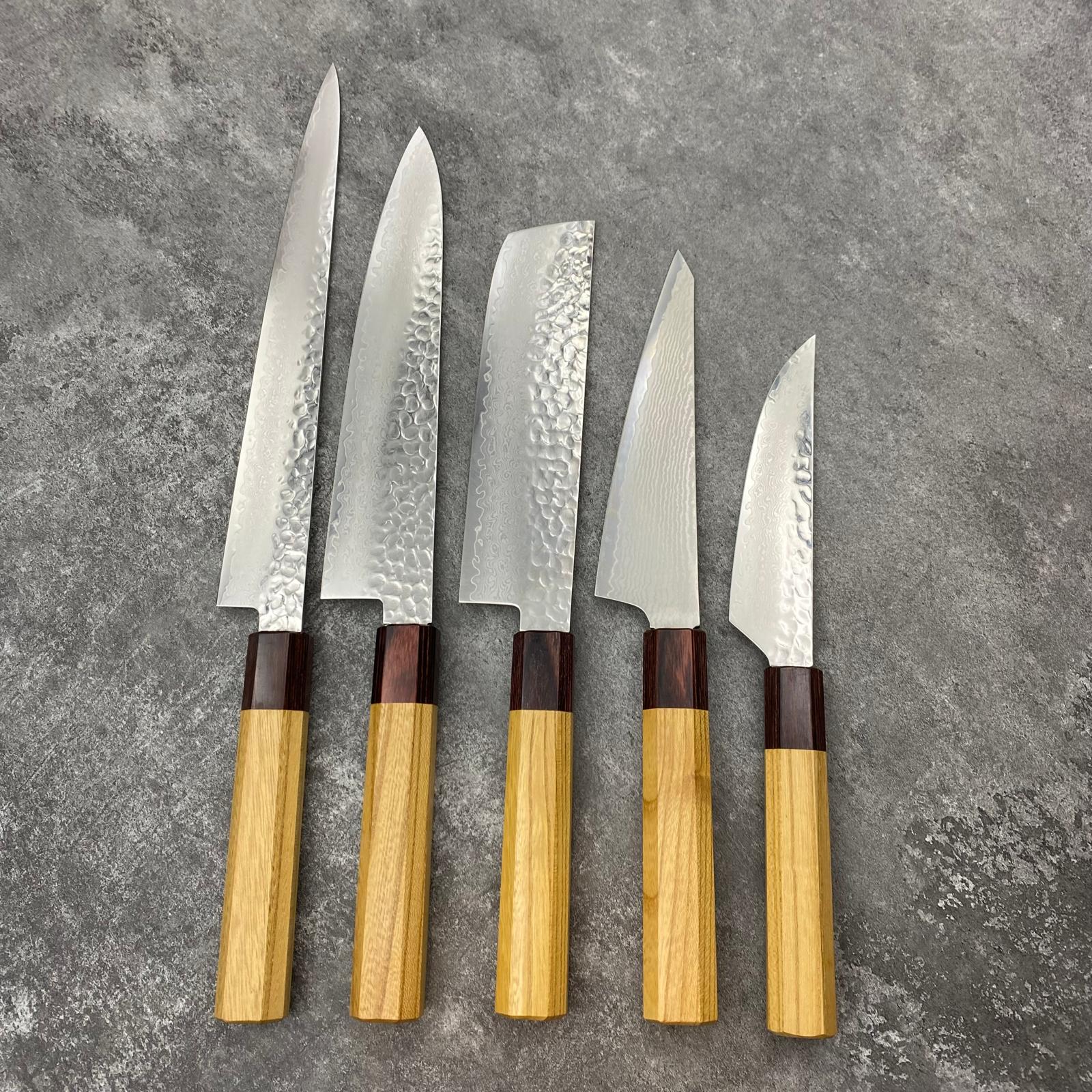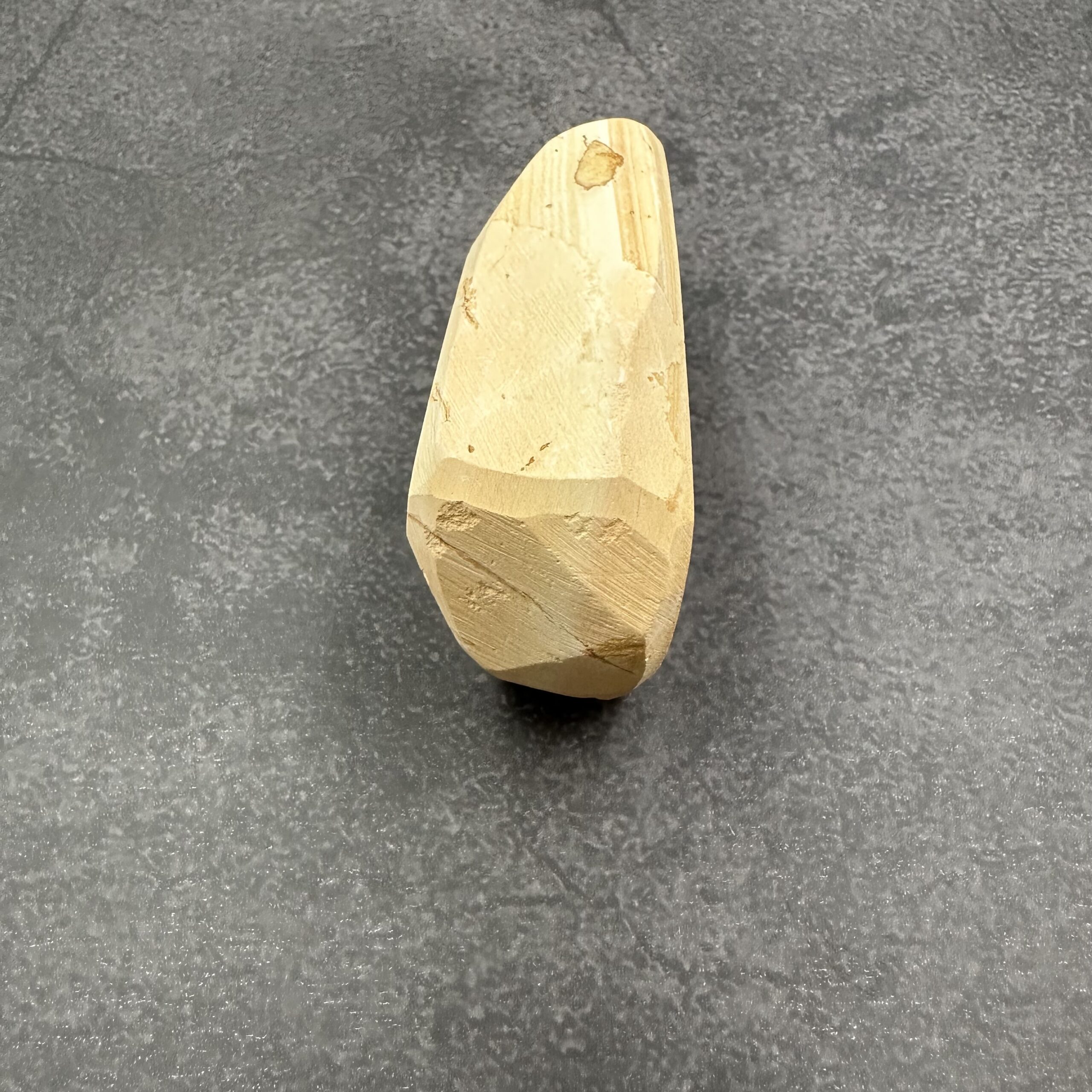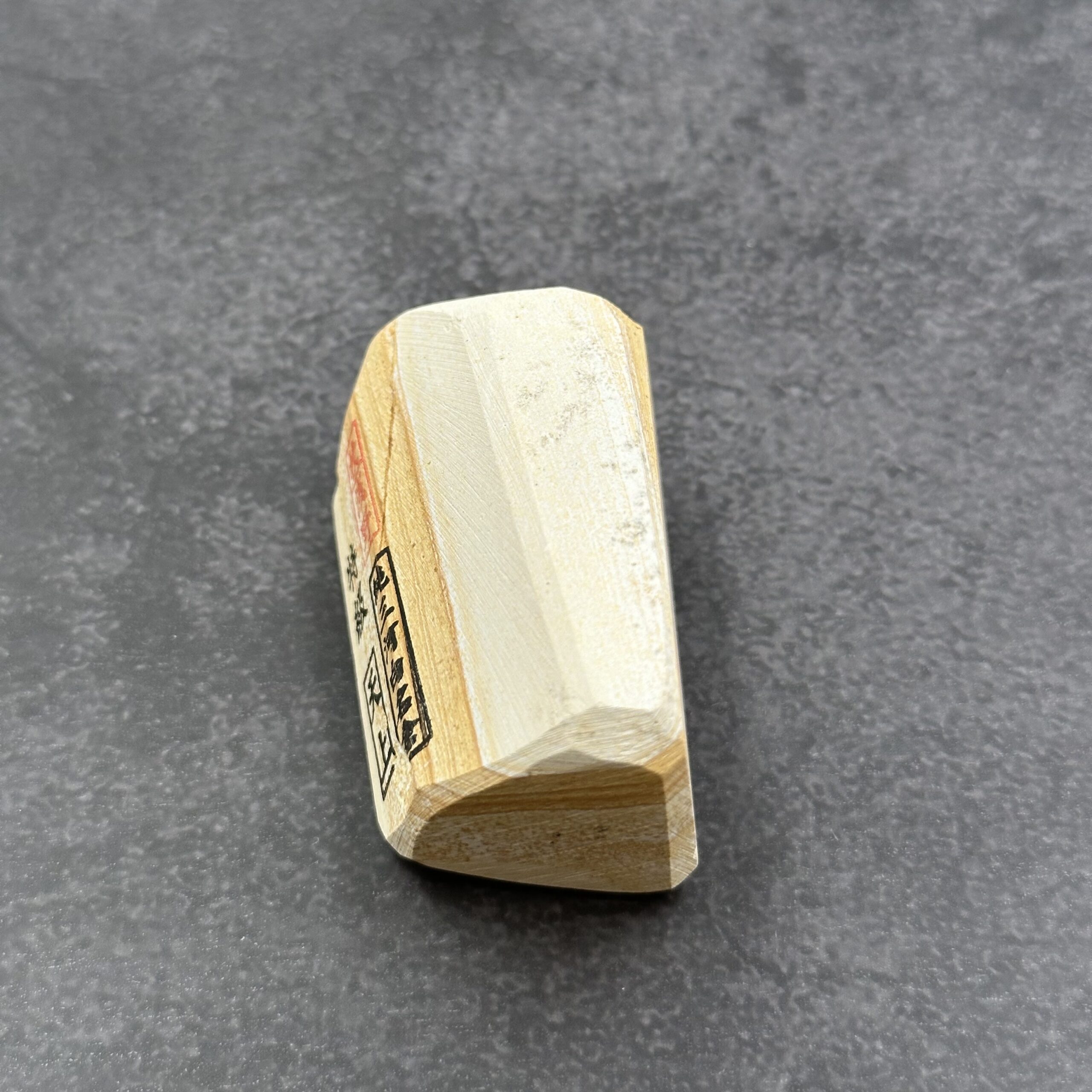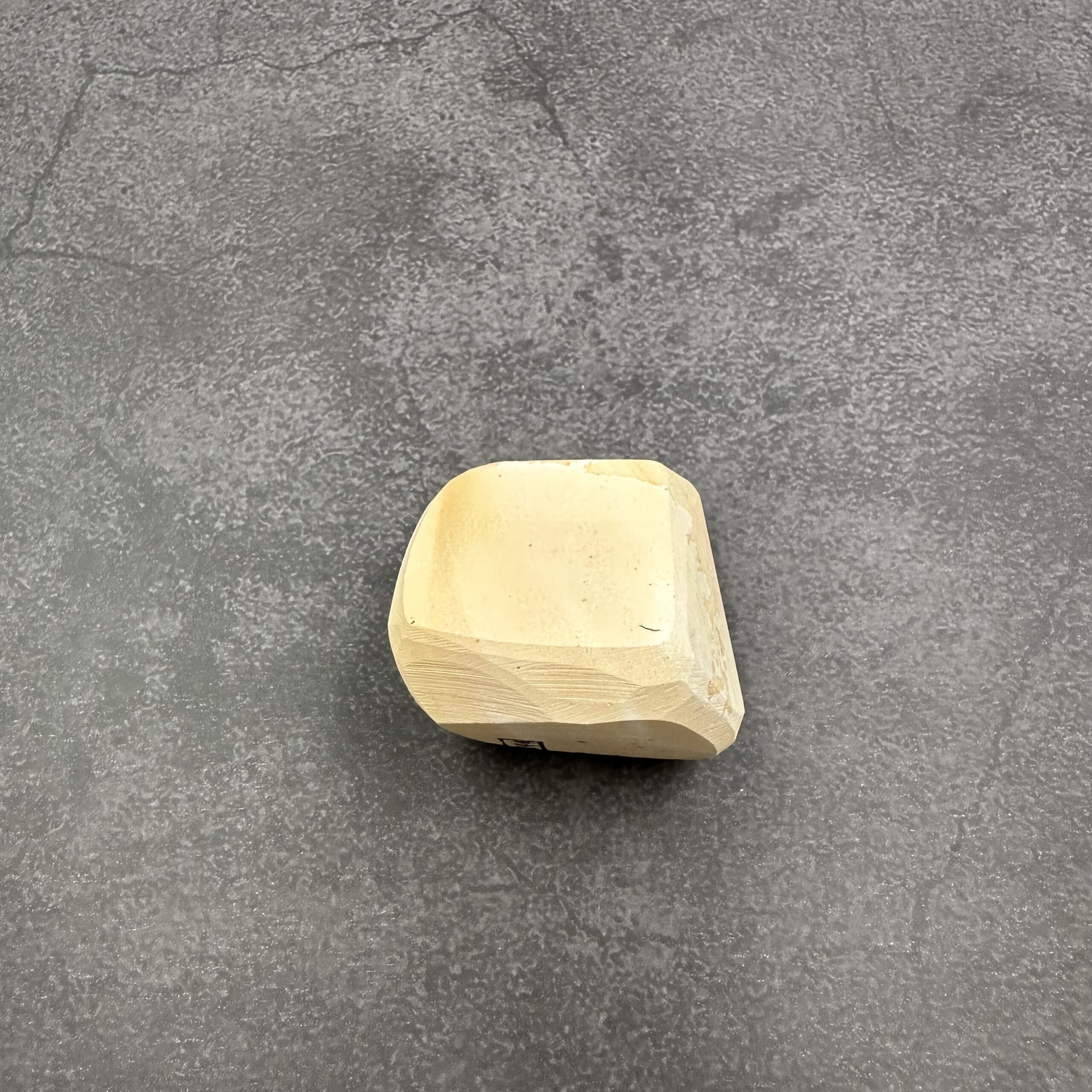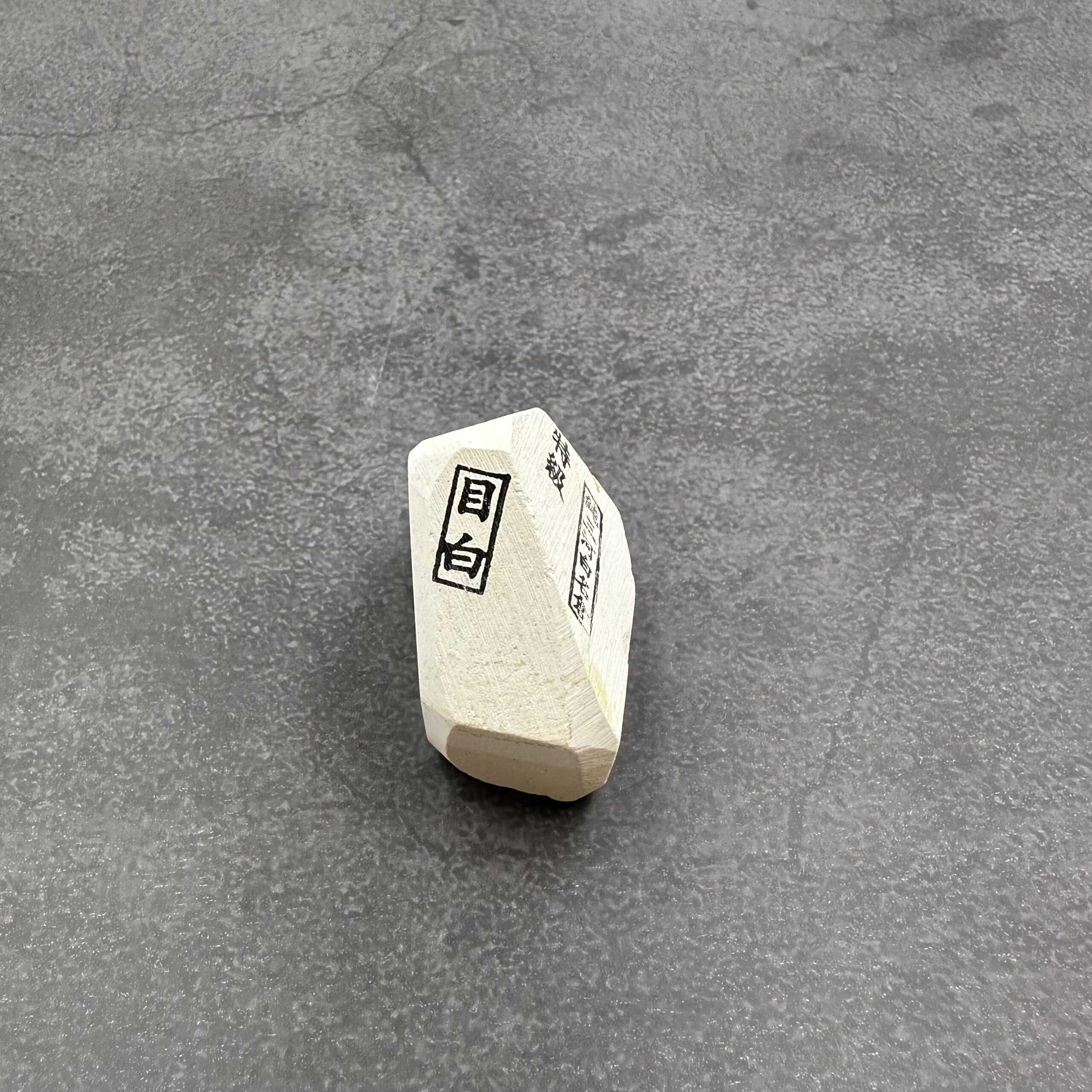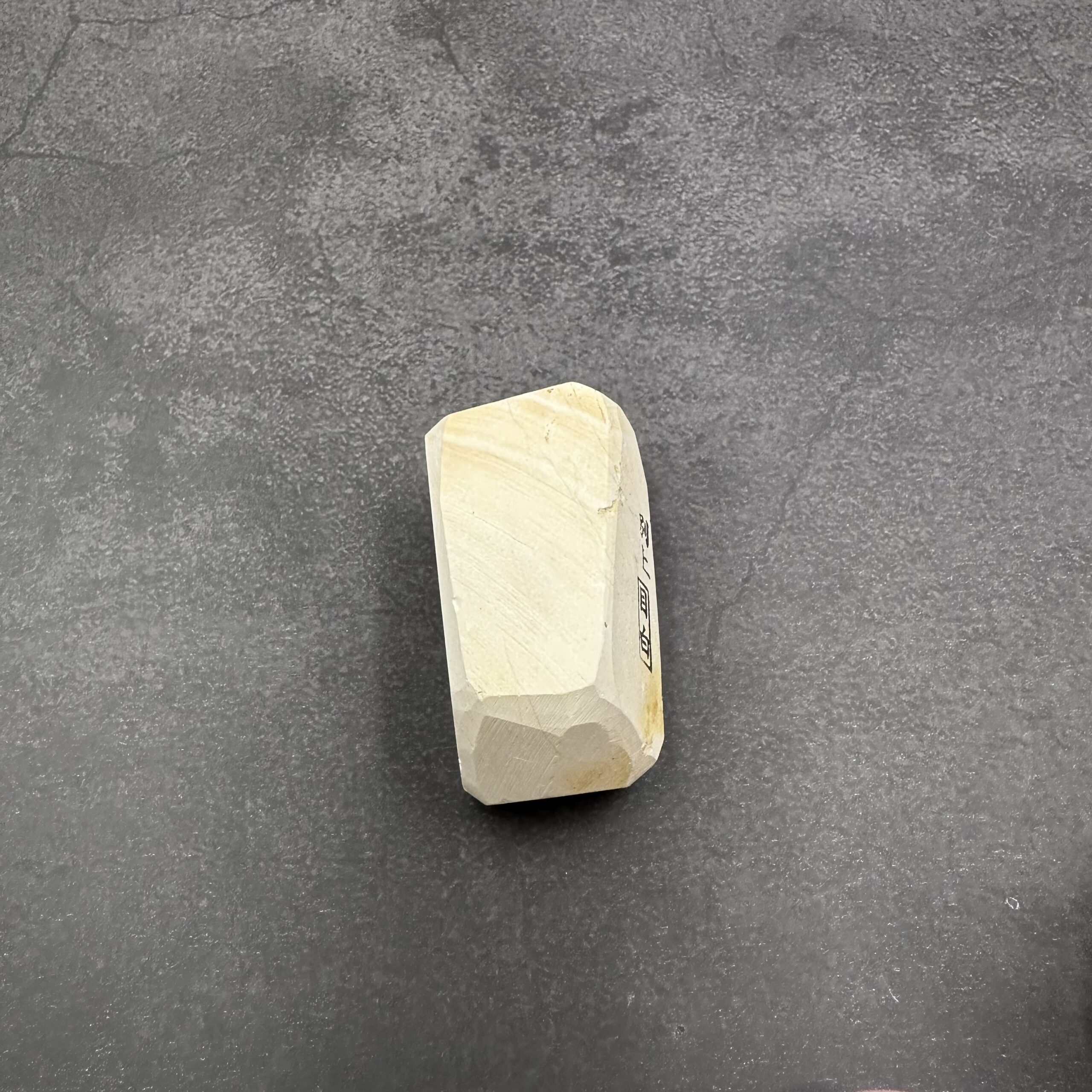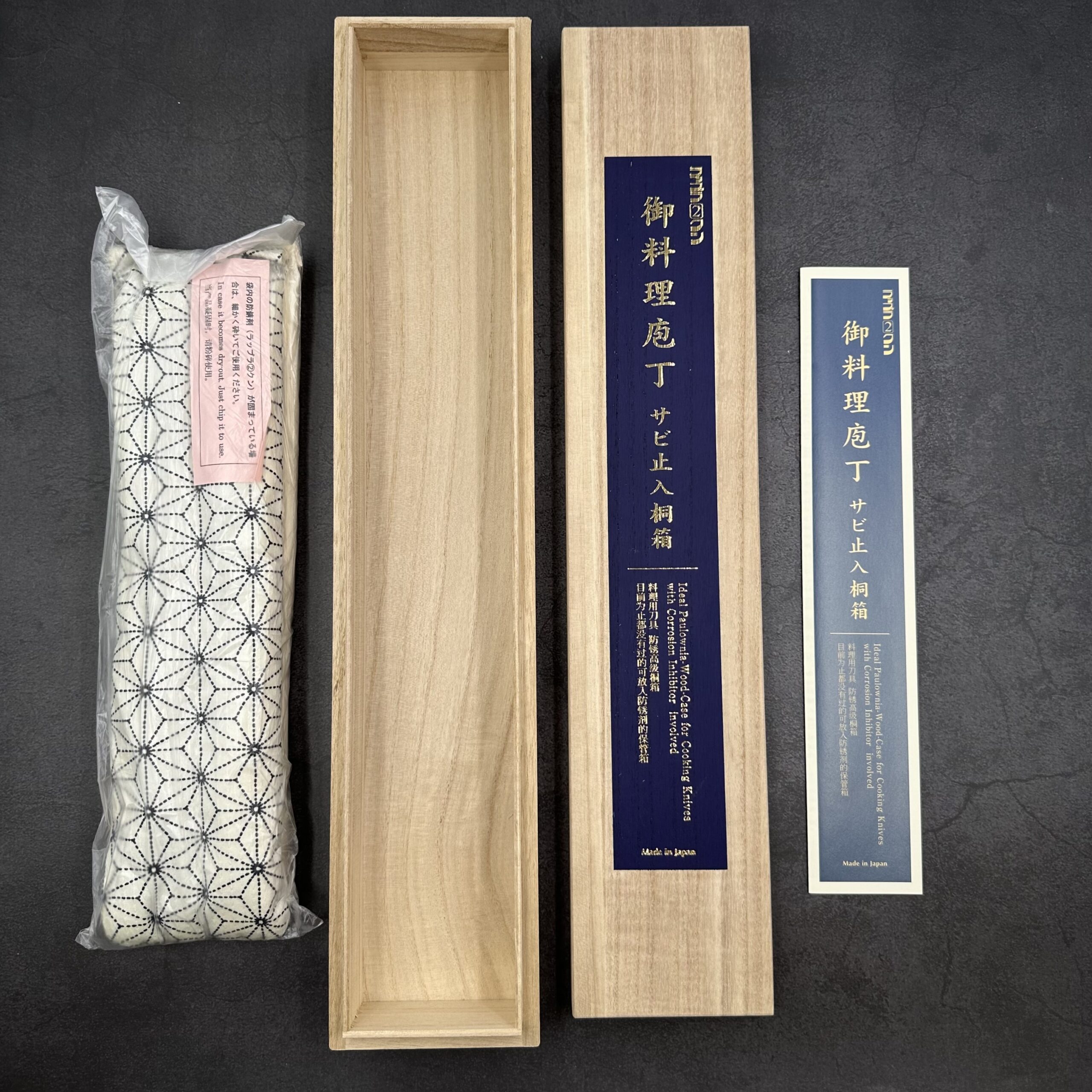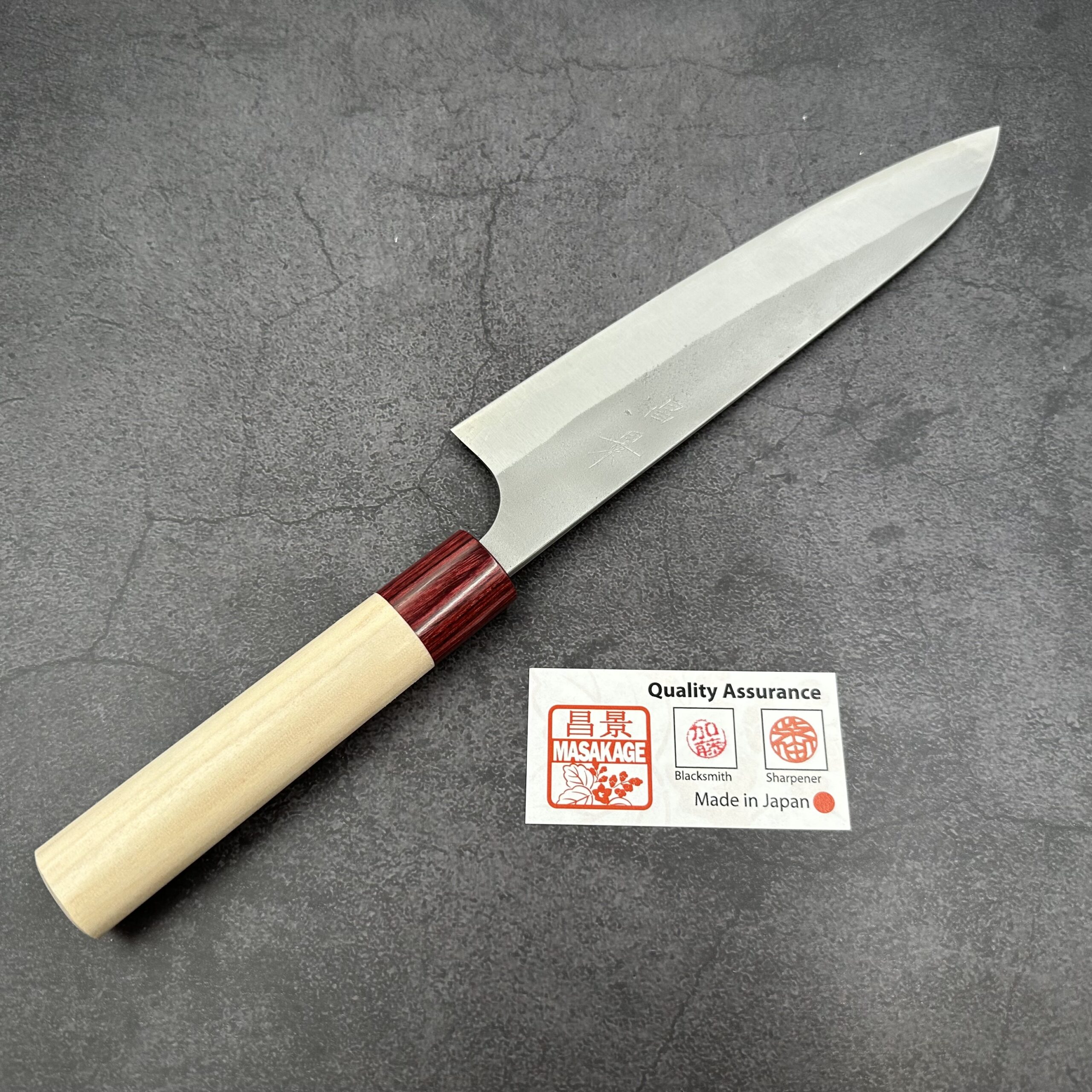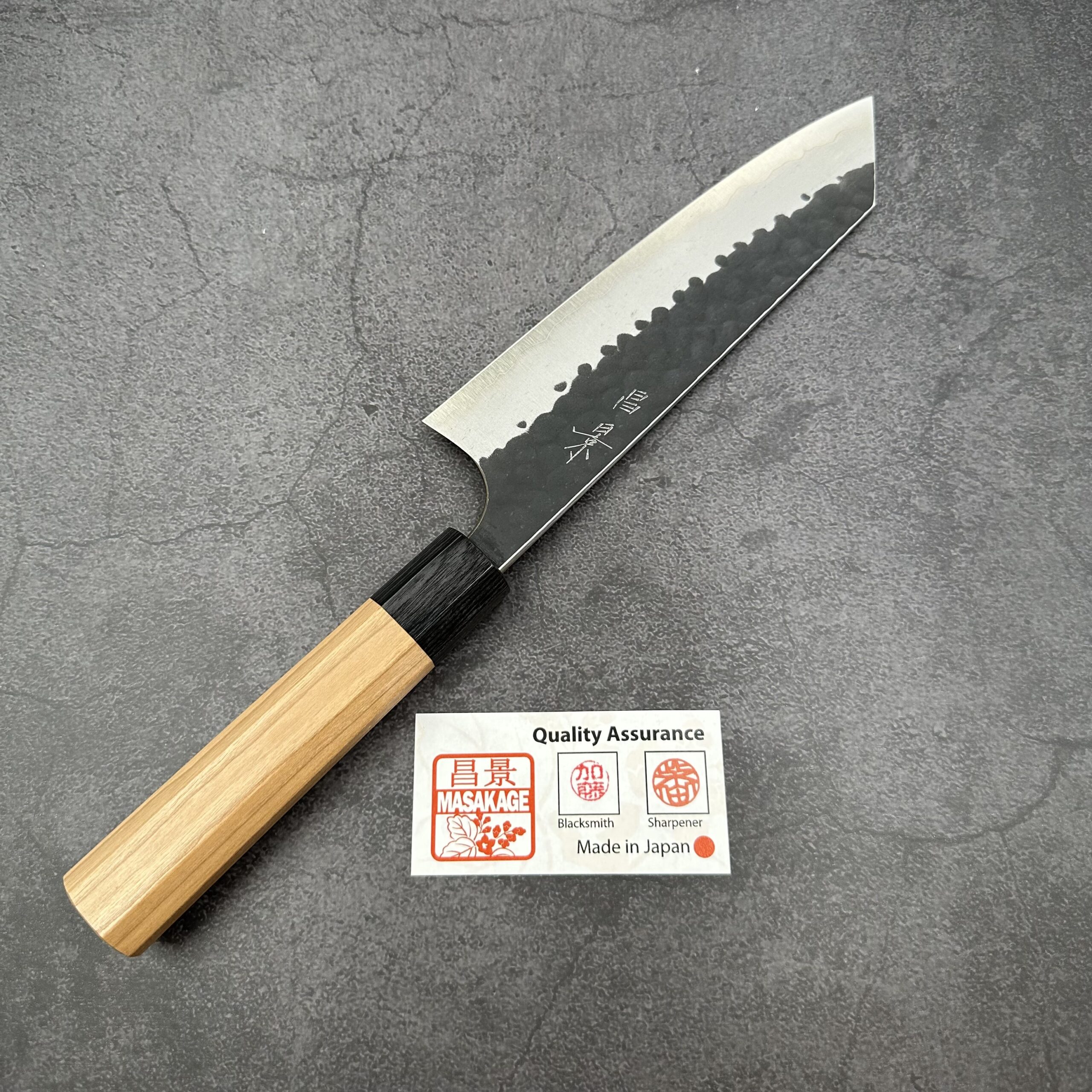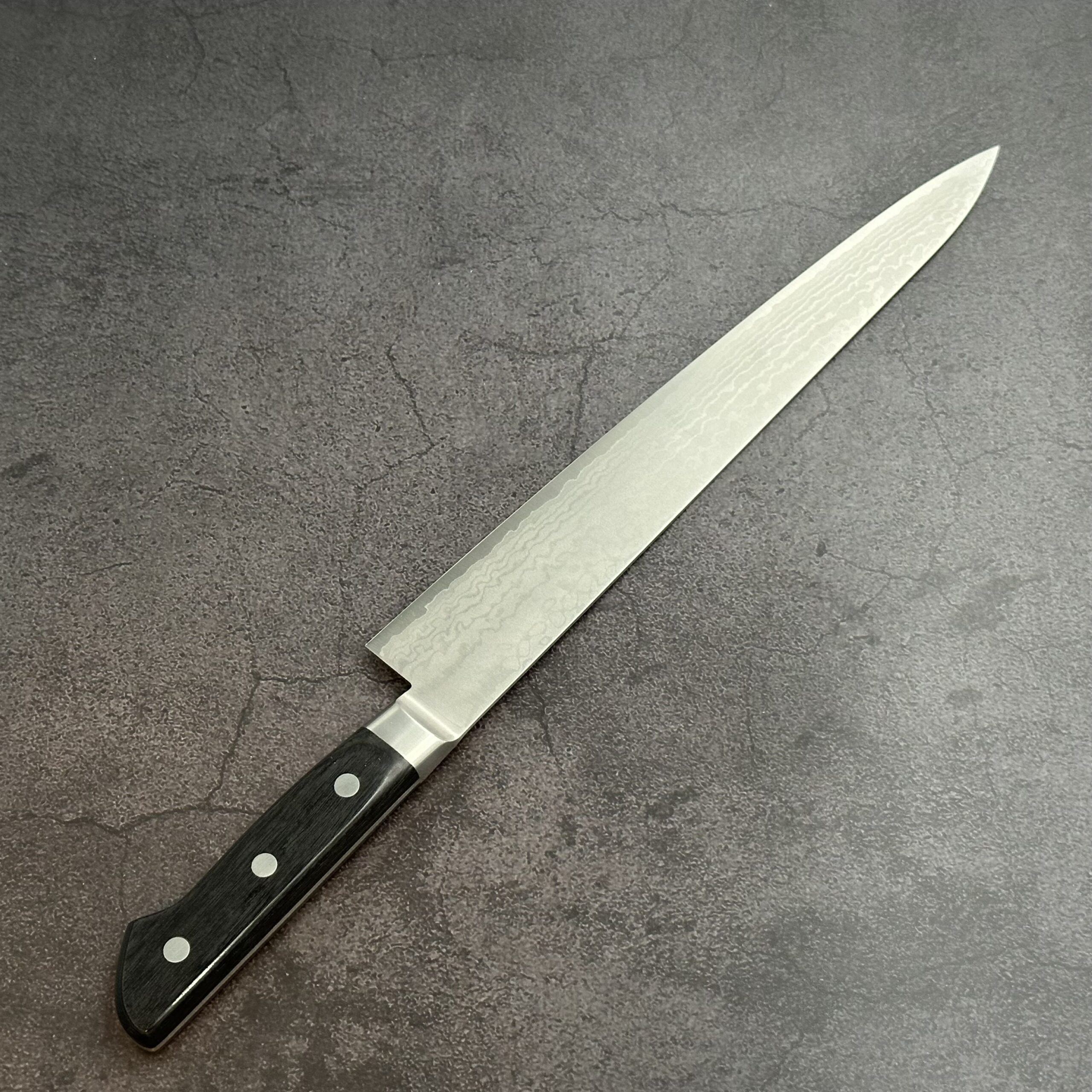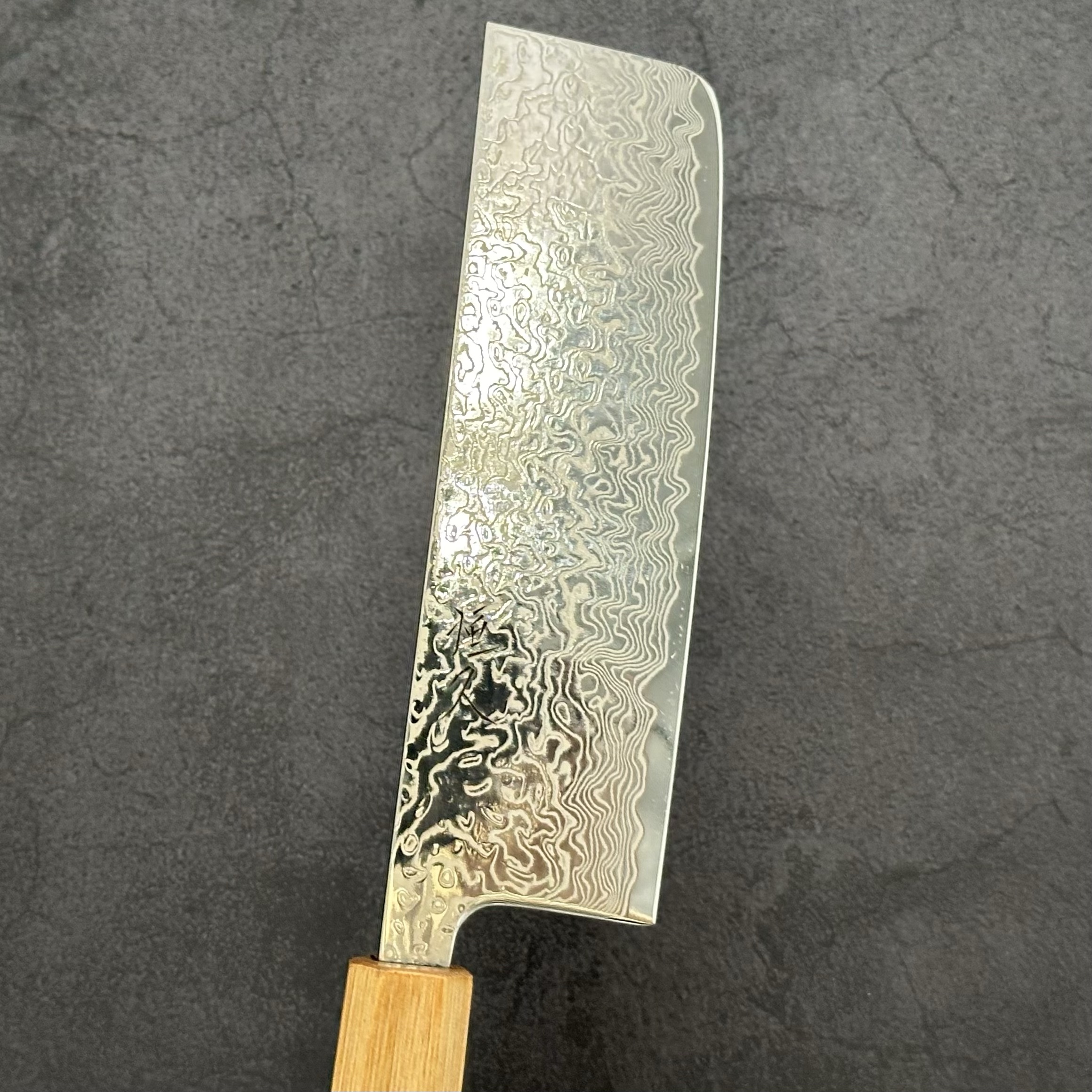All Product
Showing 1–12 of 174 results
-
Preorder 7-14 day Sakai Takayuki 33-Layer Damascus VG10 Knife Set
CHF649Our stock in Switzerland has sold out, and we are shipping new items from Japan to Switzerland. They will arrive in about a week.
-
Asano Stamped Mikawa Shiro Nagura “Tokkyu Grade” Tenjyou 66g
CHF32Using Nagura Stones for Whetstone Sharpening
One common technique for using a nagura stone involves selecting a nagura that is softer than the whetstone. When the nagura is rubbed on a wet whetstone, it creates a slurry composed of particles from the nagura mixing with the water on the whetstone’s surface. This method is particularly effective when using a hard whetstone, as it provides a stable working surface that resists dishing out during sharpening. The soft particles from the nagura enhance the sharpening process, and using a series of progressively finer naguras can yield a sharper edge than the whetstone alone, especially for tools like razors. Although this technique also removes some particles from the whetstone, the majority of the slurry comes from the nagura.
Another approach is to use a harder nagura on a softer whetstone. In this case, the slurry primarily consists of particles from the whetstone itself. This method is often employed on very hard whetstones that do not self-slurry—meaning they do not produce a slurry through the friction of the blade alone. However, it can also be used on softer whetstones that do self-slurry to expedite the process. Even with this method, a few particles from the harder nagura will mix into the slurry.
-
Asano Stamped Mikawa Shiro Nagura “Tokkyu Grade” Tenjyou 58g
CHF32Using Nagura Stones for Whetstone Sharpening
One common technique for using a nagura stone involves selecting a nagura that is softer than the whetstone. When the nagura is rubbed on a wet whetstone, it creates a slurry composed of particles from the nagura mixing with the water on the whetstone’s surface. This method is particularly effective when using a hard whetstone, as it provides a stable working surface that resists dishing out during sharpening. The soft particles from the nagura enhance the sharpening process, and using a series of progressively finer naguras can yield a sharper edge than the whetstone alone, especially for tools like razors. Although this technique also removes some particles from the whetstone, the majority of the slurry comes from the nagura.
Another approach is to use a harder nagura on a softer whetstone. In this case, the slurry primarily consists of particles from the whetstone itself. This method is often employed on very hard whetstones that do not self-slurry—meaning they do not produce a slurry through the friction of the blade alone. However, it can also be used on softer whetstones that do self-slurry to expedite the process. Even with this method, a few particles from the harder nagura will mix into the slurry.
-
Asano Stamped Mikawa Shiro Nagura “Tokkyu Grade” Tenjyou 65g
CHF32Using Nagura Stones for Whetstone Sharpening
One common technique for using a nagura stone involves selecting a nagura that is softer than the whetstone. When the nagura is rubbed on a wet whetstone, it creates a slurry composed of particles from the nagura mixing with the water on the whetstone’s surface. This method is particularly effective when using a hard whetstone, as it provides a stable working surface that resists dishing out during sharpening. The soft particles from the nagura enhance the sharpening process, and using a series of progressively finer naguras can yield a sharper edge than the whetstone alone, especially for tools like razors. Although this technique also removes some particles from the whetstone, the majority of the slurry comes from the nagura.
Another approach is to use a harder nagura on a softer whetstone. In this case, the slurry primarily consists of particles from the whetstone itself. This method is often employed on very hard whetstones that do not self-slurry—meaning they do not produce a slurry through the friction of the blade alone. However, it can also be used on softer whetstones that do self-slurry to expedite the process. Even with this method, a few particles from the harder nagura will mix into the slurry.
-
Asano Stamped Mikawa Shiro Nagura “Tokkyu Grade” Mejiro 50g
CHF29Using Nagura Stones for Whetstone Sharpening
One common technique for using a nagura stone involves selecting a nagura that is softer than the whetstone. When the nagura is rubbed on a wet whetstone, it creates a slurry composed of particles from the nagura mixing with the water on the whetstone’s surface. This method is particularly effective when using a hard whetstone, as it provides a stable working surface that resists dishing out during sharpening. The soft particles from the nagura enhance the sharpening process, and using a series of progressively finer naguras can yield a sharper edge than the whetstone alone, especially for tools like razors. Although this technique also removes some particles from the whetstone, the majority of the slurry comes from the nagura.
Another approach is to use a harder nagura on a softer whetstone. In this case, the slurry primarily consists of particles from the whetstone itself. This method is often employed on very hard whetstones that do not self-slurry—meaning they do not produce a slurry through the friction of the blade alone. However, it can also be used on softer whetstones that do self-slurry to expedite the process. Even with this method, a few particles from the harder nagura will mix into the slurry.
-
Asano Stamped Mikawa Shiro Nagura “Betsu Jou Grade” Mejiro 91g
CHF39Using Nagura Stones for Whetstone Sharpening
One common technique for using a nagura stone involves selecting a nagura that is softer than the whetstone. When the nagura is rubbed on a wet whetstone, it creates a slurry composed of particles from the nagura mixing with the water on the whetstone’s surface. This method is particularly effective when using a hard whetstone, as it provides a stable working surface that resists dishing out during sharpening. The soft particles from the nagura enhance the sharpening process, and using a series of progressively finer naguras can yield a sharper edge than the whetstone alone, especially for tools like razors. Although this technique also removes some particles from the whetstone, the majority of the slurry comes from the nagura.
Another approach is to use a harder nagura on a softer whetstone. In this case, the slurry primarily consists of particles from the whetstone itself. This method is often employed on very hard whetstones that do not self-slurry—meaning they do not produce a slurry through the friction of the blade alone. However, it can also be used on softer whetstones that do self-slurry to expedite the process. Even with this method, a few particles from the harder nagura will mix into the slurry.
-
Knife Anti-Rust and Disinfection Paulownia Wooden Box L size
CHF89Size Specifications
Large Size (Max 360mm blade)
- Internal Dimensions: 520mm x 70mm x 40mm
- Weight: 900g
- External Dimensions: 540mm x 90mm x 50mm
-
Knife Anti-Rust and Disinfection Paulownia Wooden Box M size
CHF89Size Specifications
Medium Size (max 300mm blade )
- Internal Dimensions: 440mm x 70mm x 40mm
- Weight: 760g
- External Dimensions: 460mm x 90mm x 50mm
-
Masakage x Yoshimi Kato Yuki Shirogami #2 Gyuto 210mm
CHF219Knife Type: Gyuto
Steel Type: Shirogami #2
Blade Length: 210mm
Blade Finish: Kasumi,(霞) Nashiji,(梨子地)
Blade Type: Double Edge– Handle –
Material: magnolia wood
Ferrule: red pakka wood -
Masakage x Koishi Aogami Super Bunka 170mm
CHF229Knife Type: Bunka
Steel Type: Aogami Super
Blade Length: 170mm
Blade Finish: Kurouchi,(黒打ち) Tsuchime,(槌目)
Blade Type: Double Edge -
Tsunehisa VG10 Sujihiki 270mm Forged Damascus
CHF199Knife Type : Sujihiki
Steel Type : VG10
Blade Length : 270mm
Blade Finishes :Forged Damascus -
Tsunehisa SLD Nakiri 155mm Damscus new version
CHF179Knife Type : Nakiri
Steel Type : SLD
Blade Length : 155mm
Blade Finishes : Damascus


